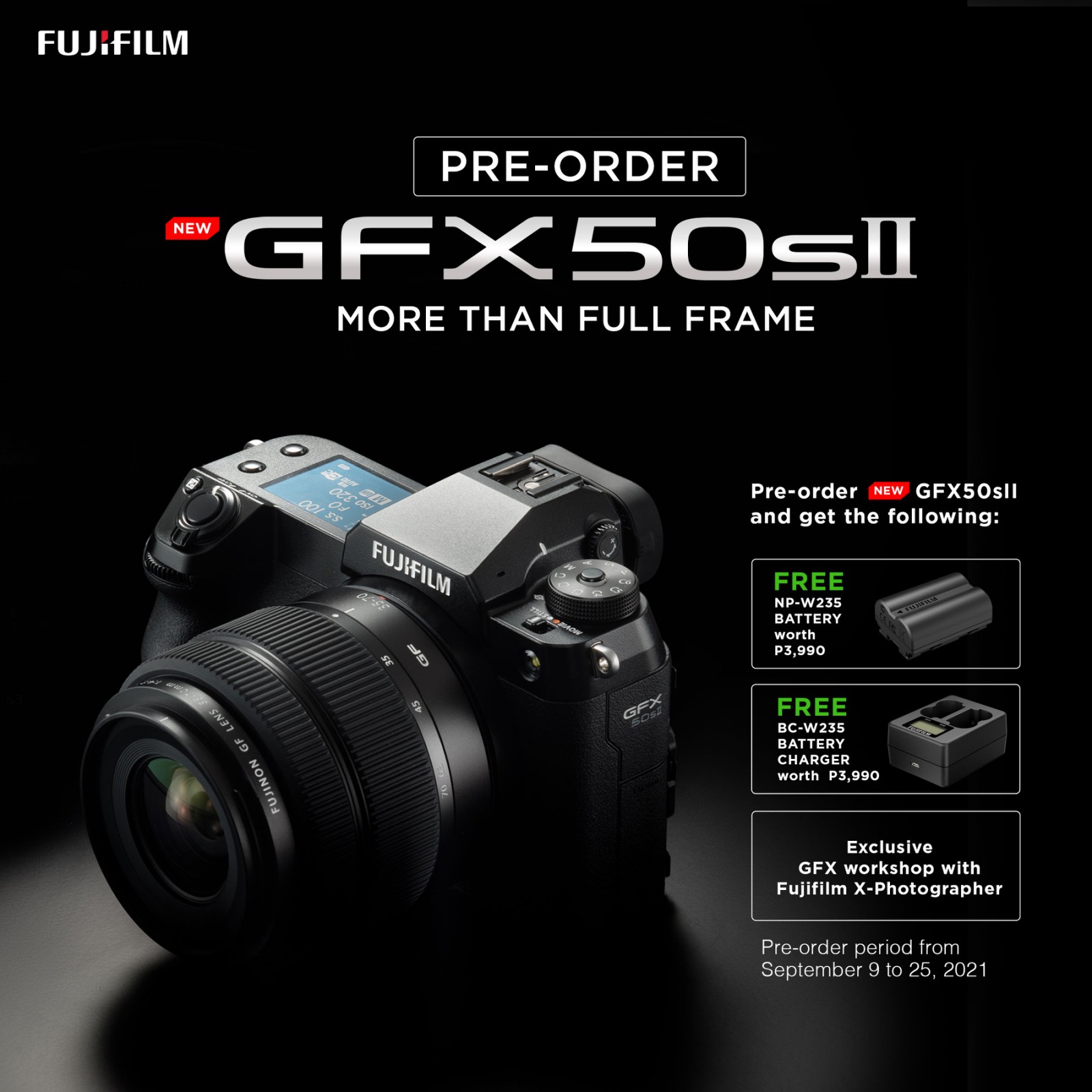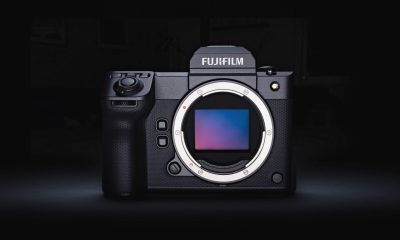Cameras
FUJIFILM announces the GFX50S II medium format camera
This is by far their cheapest medium format camera
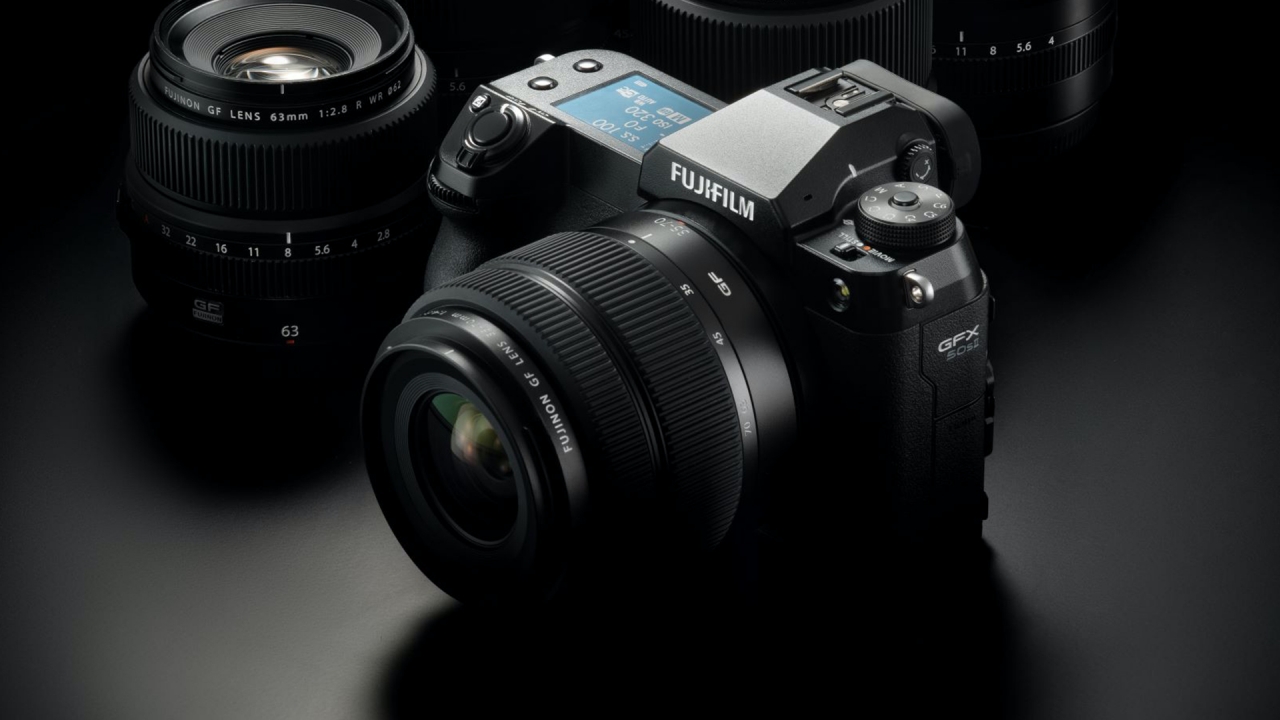
It hasn’t even been a year ever since FUJIFILM announced the GFX100S, and now it has a new, yet more affordable, medium format sibling. Just a refresher, the GFX50S II (read as GFX50S Mark II) is the successor to 2017’s GFX50S.
Medium format camera for less
The FUJIFILM GFX50 S II has a 51.4-megapixel large-format sensor that’s 1.7 times bigger than a 50-megapixel 35mm full-frame sensor you’ll find on most high-end DSLRs and mirrorless cameras nowadays. This means you get better image quality whenever you take photographs.
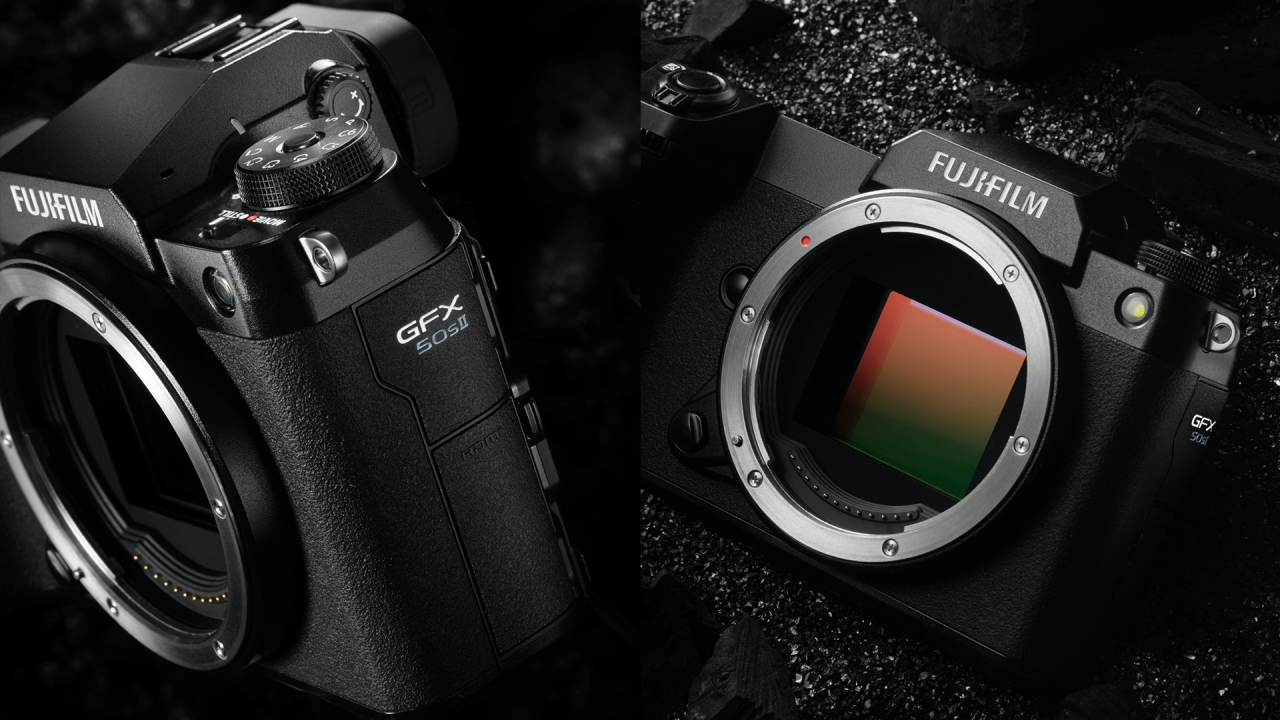
What makes this different is its specialized design. This camera uses smaller light-collecting micro lenses on the image sensor in order to create wider gaps between pixels. Not only does this result to sharper images, it also brings better ISO sensitivity, dynamic range, and better post-processing flexibility.
With a new Pixel Shift Multi-Shot function, the FUJIFILM GFX50S II can capture and generate 200-megapixel images without lapses in color presentation. This works by recording and combining 16 RAW images into one DNG (Digital Negative) RAW file via its “Pixel Shift Combiner” software.
A GFX100S minus the 102-megapixel image sensor
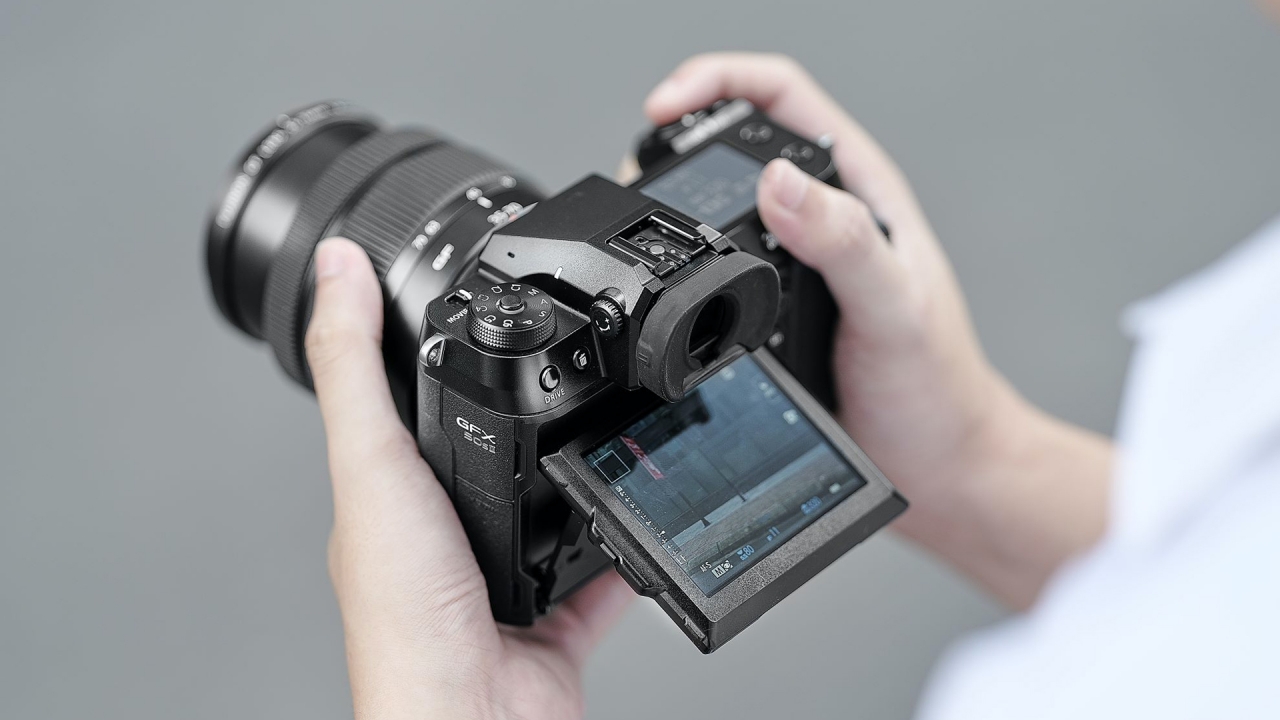
Some things stay the same though — but it’s not a bad thing. Just like the GFX100S, it weighs at just 900g (1.9lb). It also has a magnesium alloy body for utmost robustness and durability without sacrificing heft. The camera is also weather-sealed, dust and moisture-resistant, and most of all, can work in cooler places under -10ºC (or 14ºF). It even has the same 3.2-inch LCD monitor with support for tilting that an EVF (electronic viewfinder) cannot always shoot in high and low-angle shooting.
Moreover, the FUJIFILM GFX50S II is powered by the similar X-Processor 4 quad-core processor which fusions its high-speed image processing together with ultra-fast and high-precision Auto Focus (AF) system. The latest algorithm brings more life to the photos captured by this camera.
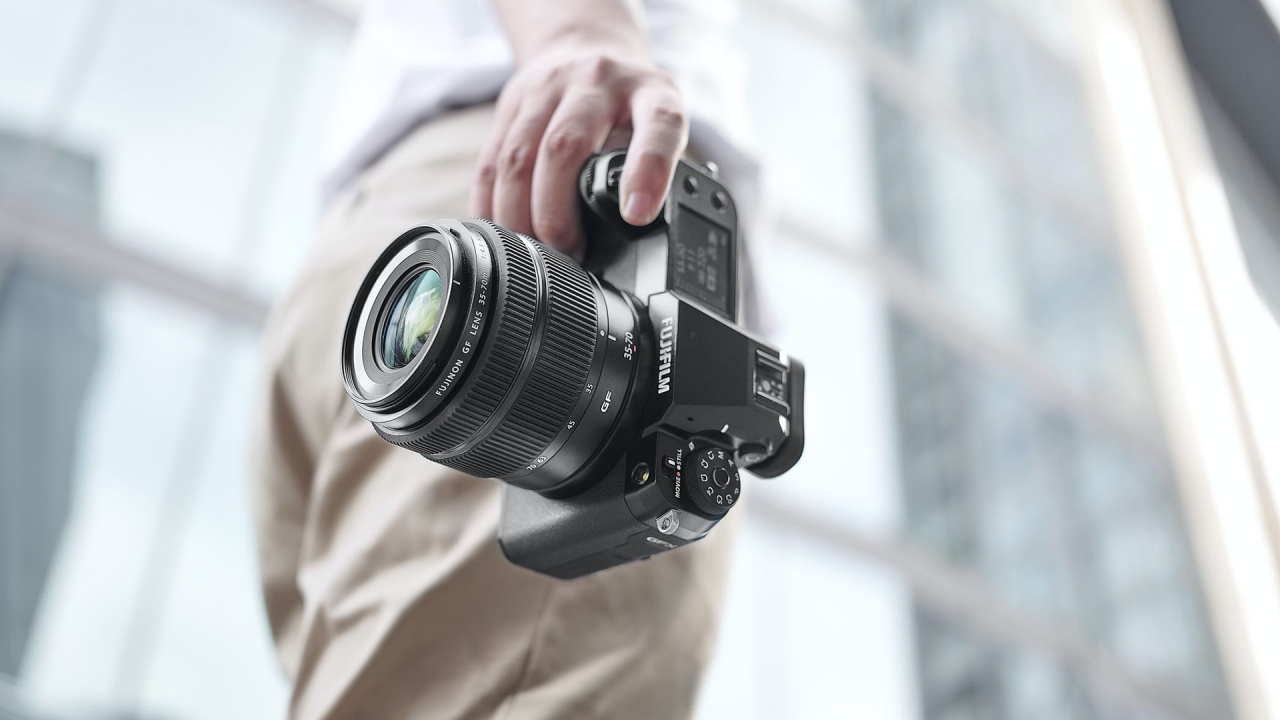
Stable, sharp shots
It even has the same 5-axis IBIS (In-Body Image Stabilization) but unlike the GFX100S, the GFX50S II is able to bring up to 6.5-stops of Vibration Reduction — which is the highest in the history of its kind. This became possible with a high-performance gyro sensor and accelerometer that can both detect motions with high accuracy rate. This just means you’ll get less-blurred shots with sharp details and more precise Face / Eye Detection as well as subject tracking.
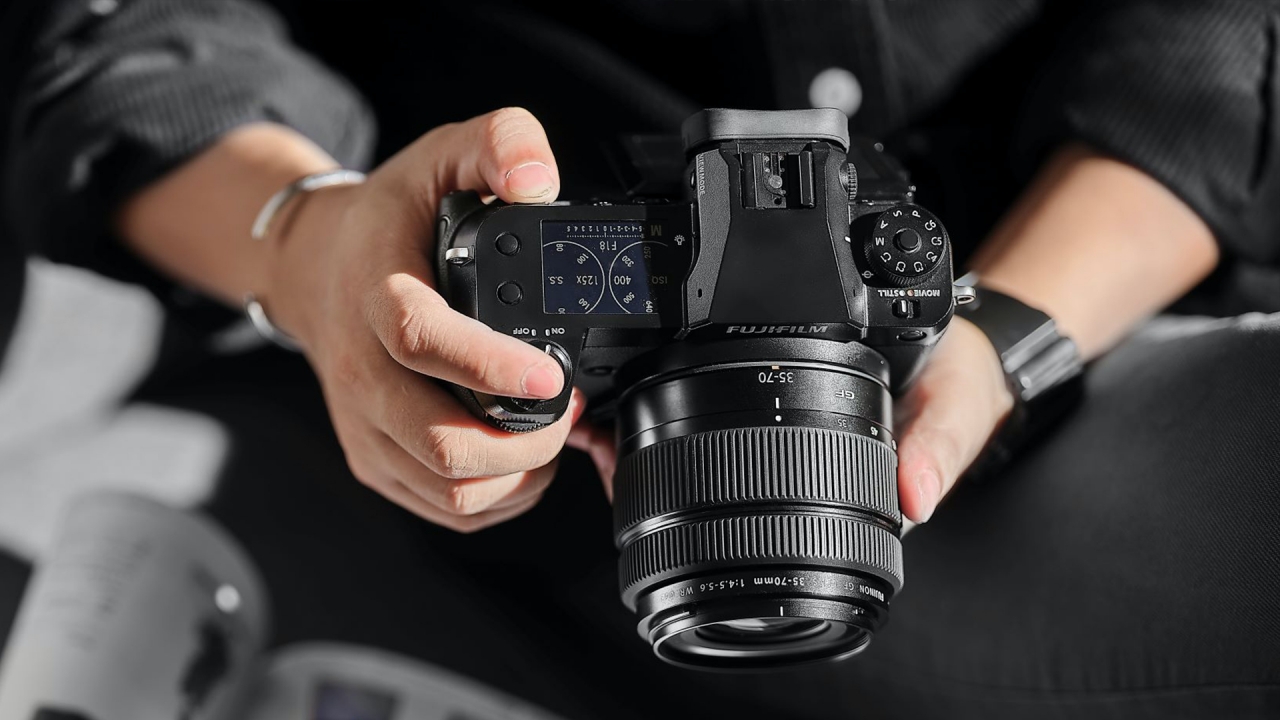
For easier operability, it has six customizable C1-C6 controls that can be modified and assigned depending on your liking. There’s even a switch between shooting Stills and Videos for added convenience so you don’t have to rotate the Mode dial all the way. There’s even a 1.8-inch sub LCD monitor at the top for better control of the EXIF settings.
Lastly, FUJIFILM’s signature Film Simulation is still here and were not left behind. You can choose between 19 different presets designed for different types of subjects and scenes. An effect can be seen directly an image through Live View.
A new FUJINON lens
The FUJINON GF35-70mm F/4.5-5.6 WR is FUJIFILM’s new interchangeable zoom lens for their large-format GFX cameras. It weighs just around 390g, making it a total of only 1300g when paired with the GFX100S or the GFX50S II. Despite it being lightweight, it’s great lens that delivers high-resolution images with fast AF performance as well.
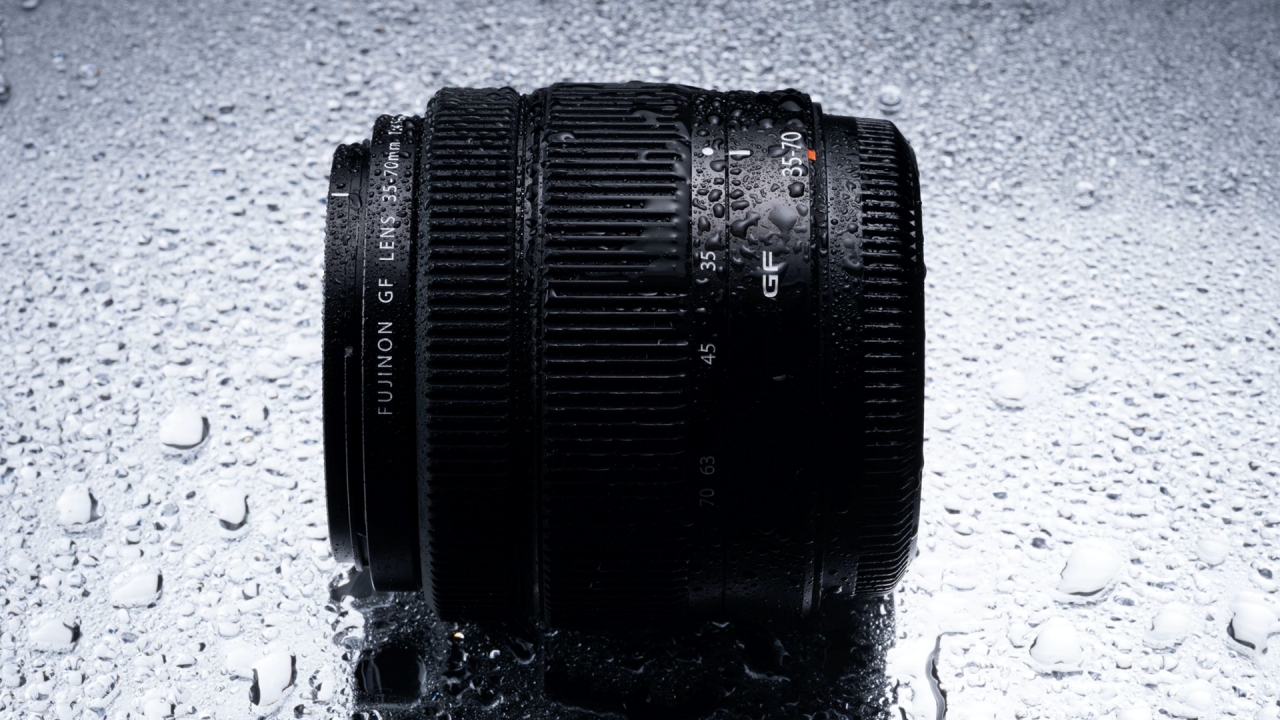
This is an 11-elements lens with one aspherical element and two ED elements in nine groups. Paired with a stepping motor, operability is silent when shooting fast subjects while still being able to retain focus and sharpness. Just like the new FUJIFILM GFX50S II, the lens is also dust and moisture-resistant that works in sandy deserts or tropical rainforests and can withstand temperatures below -10ºC or 14ºF.
Two new XF lenses, too
Other than the new GF lens, FUJIFILM also brings two new lenses for the X Series: the FUJINON XF 23mm and XF 33mm f/1.4 II LM WR. While they’re different in the size of focal lengths, they actually share the same aperture of f/1.4 with nine aperture blades. This not only provides brighter shots with less noise at night, it also brings the best of shallow Depth of Field while still being able to preserve sharper images.

Both of these lenses consist of 15 lens elements with two aspherical and three ED elements in 10 groups that reduces chromatic and spherical aberration when shooting. They even possess a silent yet fast and highly-accurate AF system. This is meant for photographers who love to capture fast-moving subjects.
Best of all? They’re also dust and moisture-resistant at 11 locations. The ability to withstand cold temperatures is still here so you can shoot astrophotography shots even in colder nights.
More lenses to come
If you’re a heavy FUJIFILM user, there are a total of 17 G-mount lenses being developed for the GFX series. One of them is a tilt and shift lens that can correct image distortions to produce undistorted photographs — more helpful in architecture shots.
For the X-Series, the current 2021 lens roadmap will bring a total of 40 interchangeable X-mount lenses. There’s the XF 18-120mm catered for videographers who rely on versatile zoom lenses. There’s also the XF150-600mm ultra-telephoto zoom lens ideal for wildlife and sports photography. Despite the long focal distance, it will actually be compact and lightweight lens meant for the XF camera line.
Pricing and Availability
A body-only FUJIFILM GFX50S II retails for PhP 223,990 and goes up to PhP 251,990 if you’ll buy it with its GF 35-70mm f/4.5-5.6 WR kit lens. Both of these will be available by the end of September 2021. Practically speaking, it costs just like the usual full-frame cameras out there.
If you’ll compare it with FUJIFILM’s recent medium format camera releases, you’ll get a price cut of more than PhP 200,000 to 400,000. This makes it the cheapest medium-format camera available so far.
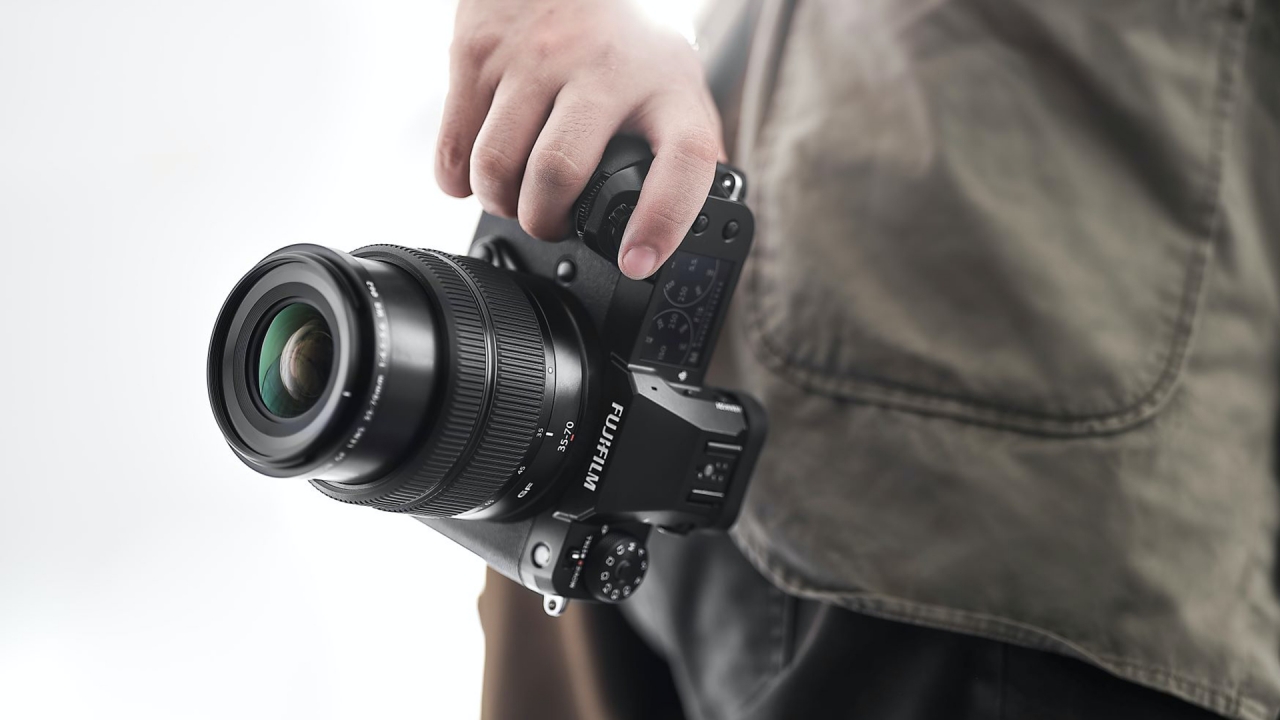
Meanwhile, you can grab it as early as September 9 until the 25th and enjoy their exclusive pre-order perks including:
- Free 1-piece NP-W235 (worth PhP 3,990)
- Free 1-piece BC-W235 Dual Battery CHarger (worth PhP 3,990)
- Exclusive GFX workshop with FUJIFILM X-Photographer
For more details, just look at the pre-order mechanics below.
FUJINON Lenses
If you just want the lenses, you have to wait a little bit before you get your hands on them. The pricing and availability of the new FUJINON lenses (plus one lens hood) are as follows:
- GF 35-70mm f/4.5-5.6 WR – PhP 55,990 (Late November 2021 release)
- XF 33mm f/1.4 R LM WR – PhP 45,990 (Late September 2021 release)
- XF 23mm f/1.4R LM WR – PhP 55,990 (November 2021 release)
- LH-XF23 II Lens Hood – PhP 3,990 (November 2021 release)

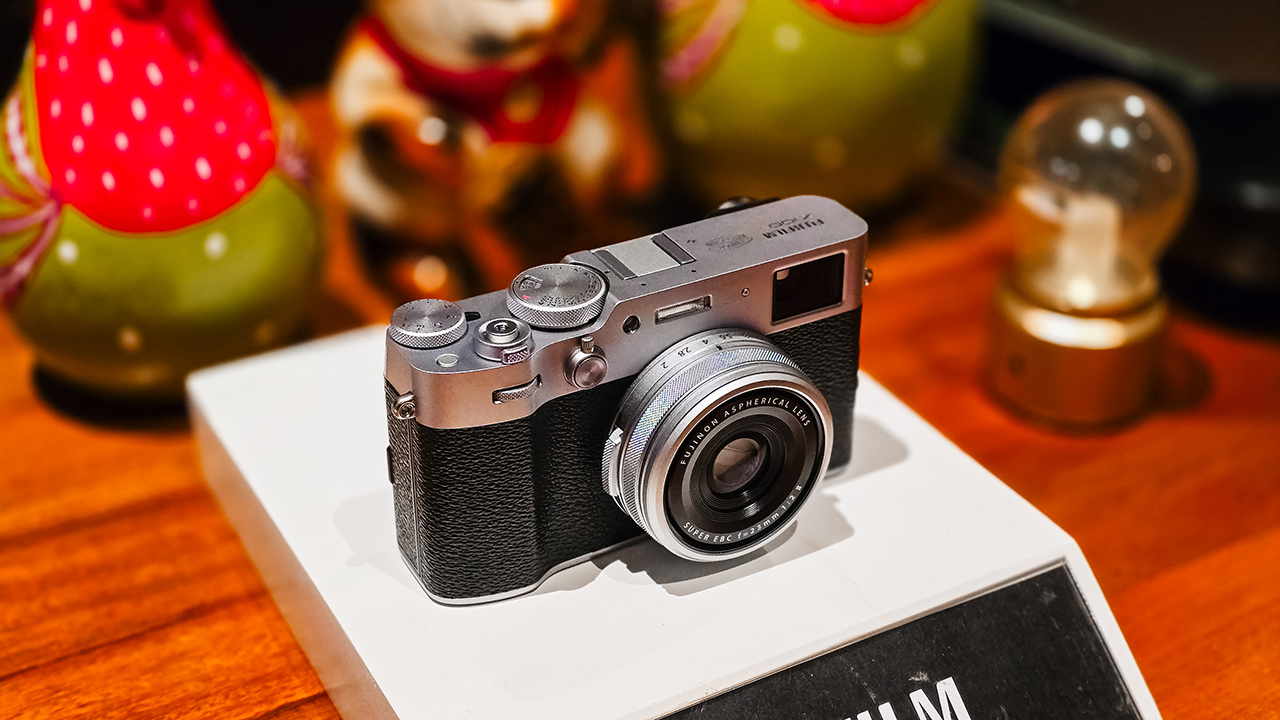
The highly-anticipated Fujifilm X100VI will make its Philippine debut at the FUJIKINA MNL 2024 Camera Fest in Bonifacio High Street, Taguig City. The event is free and open to the public and will be held from April 27 to 28. To register, click this link: FUJIKINA MNL
Celebrity Khalil Ramos will grace the local launch of the Fujifilm X100VI on the second day. Announced a few months ago, the X100VI uses a new 40.2MP X-Trans CMOS 5 HR sensor and is powered by an X-Processor 5 engine. These work together to allow more light absorption. The brand’s latest X100 series offering also features in-body image stabilization for the first time in the series. Moreover, the camera can film up to 6.2K at 30fps.
ALSO READ: Fujifilm announces X100VI, limited-edition model
Aside from the X100VI’s release, FUJIKINA 2024 also allows visitors to engage in various activities. First, there’s the Photo Walk event that lets enthusiasts explore Bonifacio High Street at night and capture its vibrant atmosphere. Participants may event get the chance to win a Fujifilm X-T30 II with their best shots.
Next, Fujifilm’s X-Series and GFX cameras will also be on display, free for passersby to test and feel. There are also three shooting studios for guests to capture memories: the Selfie & Pet, Travel, and Smile studios. And for regular Fujifilm camera users, the event will also offer free servicing.
Furthermore, there are two major photo exhibits throughout High Street, showcasing the best images from the Fujifilm community. Lastly, Fujifilm users may also pre-register for an exclusive XPPH Night here.
You may check the full schedule below.
April 27 – Amphitheater
10:00 a.m. onwards:
- Touch and Try
- Express Service
- XPPH Print Market
4:00 p.m. to 6:00 p.m.:
- Opening program
- Workshops
7:00 p.m. onwards:
- Photo Walk
- Contest
April 28 – Amphitheater
10:00 a.m. onwards:
- Touch and Try
- Express Service
- XPPH Print Market
4:00 p.m. to 6:00 p.m.:
- X100VI launch
7:00 p.m. onwards:
- XPPH Night
April 27 and 28 – C1 Park
10:00 a.m. onwards:
- Fujifilm Interactive Studios (Portrait & Pet, Wanderlust, Project Smile)
- Film Simulation Exhibit
April 27 and 28 – South Street
10:00 a.m. onwards:
- Nationwide Photo and Video Walk 2023 Exhibit
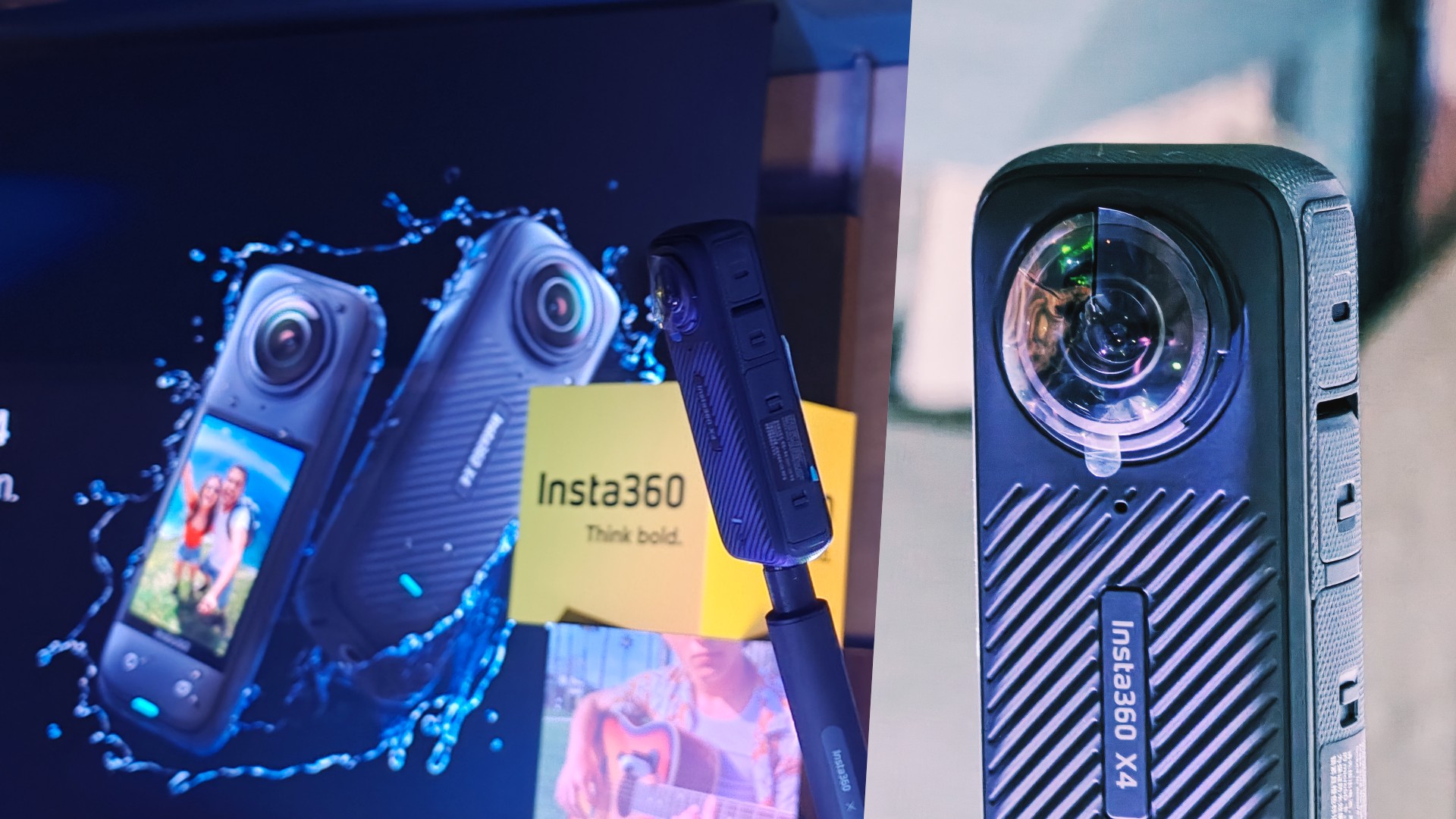
Insta360 is redefining what action cameras are capable of with the introduction of the Insta360 X4. Insta360’s latest offering allows users to film 8K resolution 360-degree videos. In addition, it can record slow-motion 4K videos at up to 120fps.
As expected, the X4 retains Insta360’s “shoot first, point later” ability and invisible selfie stick effect. Moreover, it doubles as a traditional action camera with “flat” captures in Single-Lens mode at up to 4K at 60fps.
The Insta360 X4 is available for US$ 499.99/ PhP 30,990 on the official Insta360 store, Amazon, and other retailers.
Incredible third-person views at 8K
The 8K at 30fps resolution is the highest setting for a 360-degree action camera yet. With such high resolution, users can expect detailed and sharp videos even after reframing, or choosing which specific angle to include in the capture.
For slow-motion, users can now film 4K videos at 100fps for cinematic shots slowed down four times. Furthermore, the highest resolution for a 60fps 360-degree video is upgraded to 5.7K. You may also use the X4 to take stills, as it is capable of 72MP 360-degree photos.
Two cameras in one
Aside from its default 360-degree capturing mode, users may utilize the Insta360 X4 as a regular wide-angle camera. They may shoot a first-person POV video with Single-Lens mode from a chest-mounted position. “Regular” means not having the fish eye-looking effect from the 360-degree mode and having ordinary, flat-looking images instead.
Under the Single-Lens mode, users will be able to record 4K videos at 60fps with an ultra-wide 170-degree field of view. This can be upgraded even more with MaxView while retaining 4K resolution at 30fps. Meanwhile, Me Mode, which erases the selfie stick, can film 4K at up to 120fps.
There are also upgrades on the X4’s creative shooting modes. Bullet Time can now shoot slow-mos at 5.7K at 120fps, or even 3K at an astounding 240fps. Hyperlapse videos, meanwhile, can be recorded in 8K quality.
Action specialist
A 5nm AI chip powers the Insta360 X4, along with a smart control system with Voice and Gesture Control features, and a host of AI-powered shooting and editing features.
The action camera comes with a 2.5-inch Corning Gorila Glass touchscreen for on-the-go use. Users may adjust the settings or choose the desired mode more easily.
The X4’s 2,290mAh battery allows for up to a 135-minute run time (at 5.7K@30fps). This is an impressive 67% longer battery life than its predecessor, the X3.
Moreover, the device is waterproof at up to 164 feet for diving, and cold-weather resistant at up to -20 degrees Celsius.
AI-powered editing
The X4 also harnesses the power of AI. Using the Insta360 app, users may simply move their phone or use the virtual joystick to point the camera. AI Edit, on the other hand, lets Insta360’s entire algorithm do the work for the reframing process. This improved algorithm has better subject detection, helping users save time. Users may also get creative with Shot Lab and Motion ND filters.
Cameras
Fujifilm announces X100VI, limited-edition model
The first X100 camera with in-body image stabilization
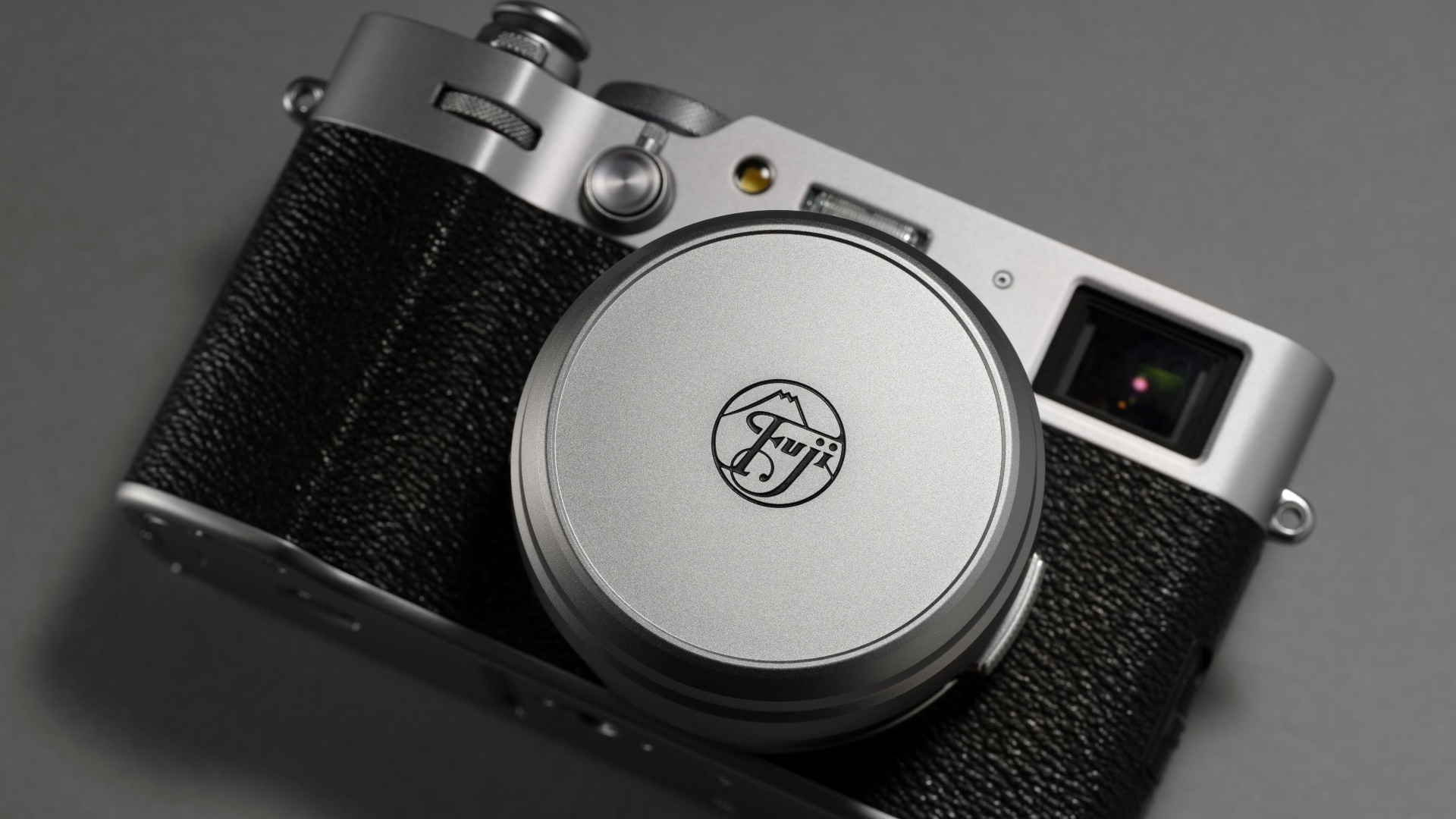
Fujifilm has launched its latest compact digital camera: The Fujifilm X100VI. The sixth generation model introduces a handful of firsts for an X100 series camera.
The X100VI boasts of a new 40.2MP X-Trans CMOS 5 HR sensor and is powered by an X-Processor 5 engine. These work together to allow more light than any prior X100 camera.
For the first time, the camera offers in-body image stabilization with up to 6.0 stops. Filming at up to 6.2K 30p has also been made possible.
High performance
In addition to more light absorption, the X100VI features ISO 125, which was only available as an extension in previous models. Its tracking AF function also ensures high-quality content especially for filming.
The camera comes with 20 film simulation modes, including the new “REALA ACE” mode for a diverse range of distinctive tones. This particular mode offers faithful color reproduction and high-contrast tonality which is suitable for various subjects and situations.
Moreover, the X100VI supports Frame.io Camera to Cloud without the need for additional accessories. Users will only need to wirelessly connect to the internet to automatically upload photos and videos. This speeds up the process from shooting to final editing.
Better operability
The X100VI also has an “Advanced Hybrid Viewfinder” function. With this, users will be able to switch between the optical (OVF) and electronic (EVF) viewfinders. The EVF itself is equipped with a high-resolution OLED panel with about 3.69 million dots.
Meanwhile, the “Electronic Range Finder” (ERF) allows a small EVF to be simultaneously displayed on the OVF. This permits the photographer to capture the subject in the OVF while magnifying the in-focus area in the small EVF.
Functional design
The Fujifilm X100VI retains the compact and lightweight look of its previous iterations. As with its predecessors, the latest model’s body uses aluminum for the top and bottom surfaces.
It has also adopted the X100V’s ultra-thin tilt LCD monitor design. The shape of the grip, on the other hand, has been fine-tuned to ensure a better feel. The positions of the buttons on the back have also been moved.
Limited edition X100VI
In addition to its release, a limited edition X100VI model will be made available to celebrate Fujifilm’s 90th anniversary. Only 1,934 units of the limited edition model will be available worldwide.
These numbered X100VI units are packaged in a special box that includes a special strap, soft release button, and history cards.
The camera body is engraved with the founding logo in 1934, along with a unique serial number.
In the Philippines, The Limited edition X100VI will retail for PhP 130,990. Meanwhile, the standard edition is priced at PhP 103,990.
-

 Events2 weeks ago
Events2 weeks agoStellar Blade: PlayStation taps cosplayers to play Eve for game’s launch
-

 Features1 week ago
Features1 week agoFortify your home office or business setup with these devices
-

 Gaming2 weeks ago
Gaming2 weeks agoThe Rogue Prince of Persia looks like an ultra-colorful roguelite
-

 Accessories2 weeks ago
Accessories2 weeks agoLogitech unveils G Pro X 60 gaming keyboard: Price, details
-

 Reviews1 week ago
Reviews1 week agorealme 12+ 5G review: One month later
-

 Gaming2 weeks ago
Gaming2 weeks agoLenovo confirms development of a Legion Go 2
-

 Deals2 weeks ago
Deals2 weeks agoTCL P635 TV: Big savings for TCL’s anniversary
-

 Gaming1 week ago
Gaming1 week agoNew PUMA collection lets you wear PlayStation’s iconic symbols

